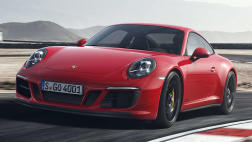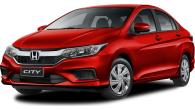Though the Jaguar X-Type has been disparagingly described as being a Ford Mondeo with a different body, there are numerous differences in many models.
Style is one major change. The wide radiator grille and quad-headlights give the X-Type, like other Jaguars, the look of the big cat for which the Jaguar is named. Inside there are traditional leather-and-timber interiors.
Jaguar X-Type was the lowest priced car that Jaguar had ever sold, selling in the low $50,000s at one time, though most had tags in the $70,000s. It first went on sale in Australia in September 2001 and sold moderately well. Meaning there are now a reasonable number on the used-car market.
Some Jaguar purists felt these low-cost models would damage the image of their favourite cars. But it didn't happen to the extent they had feared. Partly because the big name German car makers had also introduced models of a similar size.
The X-Type is relatively small and really only provides seating for four. Legroom isn't too bad in the back seat but check it for headroom - see the remarks above about the athletic shape of the body.
Similarly, the boot is on the shallow side, though it's long enough and wide enough to give it a reasonable volume. Best of all, the X-Type feels like a Jaguar thanks to its comfortable suspension and silky light steering.
Build quality is generally good because by the time the X-Type was launched, Jaguar, with a lot of guidance from owner Ford, had completely revised its build procedures.
At first the Jaguar X-Type was sold only with all-wheel drive, to improve its road grip. This helped to lift it away from the “rebodied Ford Mondeo” insult. However, this AWD-only unique selling point vanished with the launch of a front-wheel-drive X-Type in May 2002. This was cheaper to buy than the AWD and so picked up extra sales.
The all-wheel drive X-Types come with a V6 petrol engine of 2.5 or 3.0-litre displacement. The front-drive models have a 2.1-litre V6 – which is confusingly badged as a 2.0-litre. This smaller V6 engine has reasonable performance as this car is significantly lighter than the AWD models. The smoothness of a small V6 is a great reason for buying because most in this class only have four-cylinder engines.
Jaguar introduced a turbo-diesel to its X-Type line-up in June 2008. It's a four-cylinder unit with a capacity of 2.2 litres. While there's the inevitable lag off the line and when you ask the engine to accelerate from low revs, once it has reached a cruising state it provides the serene motoring that appeals to those who love their Jaguars.
Transmissions are mainly automatic, though there were some imports of five-speed manuals of the front-drive models until 2005. Manuals could prove a drawback when it comes to resale time. Automatics have five ratios when fitted beside the petrol engines, but six with the turbo-diesel.
Jaguar is long established in Australia and the dealer network is well organised. Dealers are focused on metropolitan areas, but the partnership with Land Rover may mean that some country dealers have mechanics with experience on Jaguars.
Spare parts prices are about average for a car in this upmarket class and we seldom hear complaints about availability. Insurance costs seem to vary more than average from company to company so it's worth shopping around for the best deal. As always, make sure to do an apples with apples comparison.
Jaguar Australia has an approved used-car scheme, combined with an extended warranty. You will probably be asked to pay more for one of these cars, but many regard it as money well spent.
If you want to save money perhaps track down an X-Type that has a full service record from an Jaguar dealer.
WHAT TO LOOK FOR
If you're comfortable in your mechanical knowledge look over an X-Type carefully, but it's smart to have your initial checks backed up by one from a professional.
Look over the body for signs of previous panel damage or repairs. The latter may show up as mismatched paint colours from panel to panel, and/or tiny specs of paint on unpainted surfaces such as glass and badges. Check the interior for evidence of damage caused by harsh use.
Look for fading and/or cracking of the dashboard top and the rear shelf that has been caused by long-term exposure to the sun.
Be sure the engine starts promptly, even in diesel format, and settles down to a smooth idle straight away. The diesel won't be quite as silky as the petrols because it's a four-cylinder. Listen and feel for any hesitation in an automatic transmission and/or one that's seems to change gears too often.
CAR BUYING TIP
Beware the upmarket car that hasn't been correctly serviced because the owner has stretched their finances to buy it.
Jaguar X Type 2002:
| Engine Type | V6, 2.1L |
|---|---|
| Fuel Type | Premium Unleaded Petrol |
| Fuel Efficiency | 11.0L/100km (combined) |
| Seating | 5 |
| Price From | $5,830 - $8,140 |



.jpg)














.png)



.jpg)

.jpg)
.jpg)